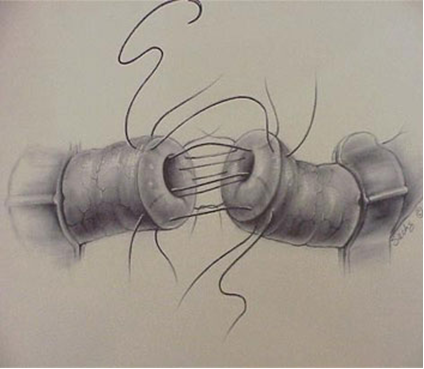INFERTILITY/VasovasostomyThe term Vasectomy Reversal (vasovasostomy) is the process of reconnecting the tubes (vas deferens ) that were cut during a vasectomy Between 4 and 6% of vasectomized men consider a vasectomy reversal. Approximately 60% of men consider vasectomy reversal because of remarriage. There are many other reasons that include family planning and the desire to maintain fertility for the future. The term Vasectomy Reversal (vasovasostomy) is the process of reconnecting the tubes (vas deferens ) that were cut during a vasectomy Between 4 and 6% of vasectomized men consider a vasectomy reversal. Approximately 60% of men consider vasectomy reversal because of remarriage. There are many other reasons that include family planning and the desire to maintain fertility for the future . In most cases the vas deferens can be reattached but, in many cases, fertility is not achieved. There are several reasons for this, including blockages in the vas deferens, and the presence of autoantibodies which disrupt normal sperm activity. If blockage at the level of the epididymis is suspected, a vaso-epidymostomy (connecting the vas to the epididymis) can be performed. What is required for a successful vasectomy reversal? The patient must have sperm available to pass through at least one reconnection. The second condition is that each reconnection must be as watertight as possible. Most urologists specializing in the field of male infertility perform vasovasostomies using an operative microscope for magnification, under general or regional anesthesia. Vasoepididymostomy (VE) is often considered one of the most technically challenging operations in the field of urology. The procedure requires anastomosis of a single epididymal tubule (luminal diameter .15-.25 mm) to the lumen of the vas deferens (diameter .3-.4 mm), and is reserved for patients with congenital or acquired epididymal obstruction, or patients who have failed previous attempts at surgical reconstruction of the vas deferens. This surgery attaches the vas deferens directly to the epididymis, the coiled tube on the back of each testicle where sperm matures. 
Rate of Pregnancy The rate of pregnancy depends on such factors as the method used for the vasectomy and the length of time that has passed since the vasectomy was performed. The reversal procedures are frequently impermanent, with occlusion of the vas recurring two or more years after the operation. Between 4 and 6% of vasectomized men consider a vasectomy reversal. Approximately 60% of men consider vasectomy reversal because of remarriage. There are many other reasons that include family planning and the desire to maintain fertility for the future. Incontinence Incontinence is involuntry leakage of urine seen in both men and women in the elderly age group. The common problem in women are either urge incontinence (inability to hold urine till the toilet), stress incontinence where leakage occurs during a strenous work or cough/sneezing. In both the cases the treatment depends upon the severiety of the problem. For mild cases medical treatment with drugs like oxybutinin or other anti cholinergics can be tried. For more difficult cases of urge incontinence newer treatments like Botox injection into the bladder are available. Surgeries are rarely needed for urge incontinence and are usually preferred in the children and young adults. Bothersome stress incontinence in both men and women can be treated by using urethral slings placed at surgery. Artificial urethral sphincter is also available but involves complicated surgery and high cost. Milder cases of stress incontinence can be treated with medicines like Duloxitene. In women very often stress incontinence treatment also involves surgical corrections of associated prolapse of pelvic organs. These procedures carry success rate of 80-90%. |

+91 - 95661 39630
+91 - 94441 68963



